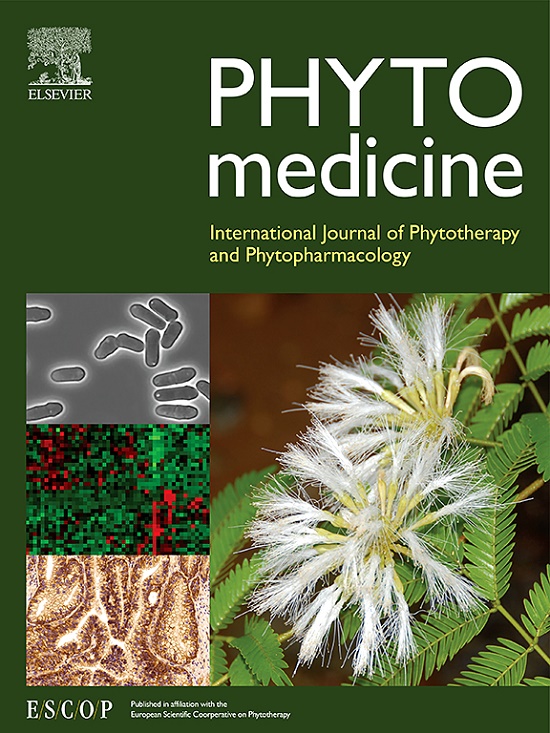Mixtures of EGCG, bamboo leaf flavonoids, and broccoli seed water extracts exhibit anti-glycation and skin-protective effects
IF 6.7
1区 医学
Q1 CHEMISTRY, MEDICINAL
引用次数: 0
Abstract
Background
Skin aging is a multifaceted process. Glycation significantly contributes to skin aging and the development of complications. Researchers are currently investigating various substances, particularly those from natural sources, to combat skin glycation.
Purpose
This study aimed to comprehensively evaluate the anti-glycation effect of a new natural combination, EBB, which includes (-)-epigallocatechin-3 gallate (EGCG), bamboo leaf flavonoids, and broccoli seed water extracts, using cell and animal models and to explore its potential anti-glycation mechanism.
Methods
The components of EBB were identified using HPLC and UHPLC-MS/MS. Additionally, a glycation cell model induced by glyceraldehyde, advanced glycation end products (AGEs), and methylglyoxal was established in HaCaT cells to evaluate the efficacy of EBB in alleviating glycation. Differential genes, signalling pathways, and biological processes were analysed through RNA sequencing to explore the mechanisms of the anti-glycation effects of EBB, which were further validated using qRT-PCR and Western blotting. Finally, the protective effects of EBB against glycation and skin damage were assessed in zebrafish and mouse in vivo models through histological studies and the measurement of various skin physiological parameters.
Results
Glucoraphanin, Sinapine and orientin were identified in EBB, which effectively reduced the formation of AGEs and decreased the expression level of the RAGE protein in HaCaT cells. Transcriptomic analyses revealed that EBB regulated the expression of 576 differentially expressed genes. These genes were enriched in various biological processes, such as chronic inflammation and immune responses, and participated in the regulation of multiple signalling pathways, including TNF. Glycation upregulated the expression of the ROS1 gene and protein, while EBB reversed this effect. Furthermore, EBB attenuated the glycation response by downregulating the expression levels of proteins such as p-p38, p-ERK1/2, p-p65, and TNF-α. Additionally, the reduction of AGE accumulation by EBB was confirmed in a zebrafish model. Similarly, histological analyses of mouse skin tissue and various physiological parameters demonstrated that EBB significantly mitigated damage induced by glycation.
Conclusions
Our results show that EBB effectively inhibited glycation reactions. The mechanism of action may involve the reduction of inflammation by downregulating the expression levels of RAGE and ROS1, thereby decreasing the accumulation of AGEs in keratinocytes and alleviating skin damage. This paves the way for the potential application of EBB as a valuable anti-glycation functional ingredient in the food and cosmetic industries.

求助全文
约1分钟内获得全文
求助全文
来源期刊

Phytomedicine
医学-药学
CiteScore
10.30
自引率
5.10%
发文量
670
审稿时长
91 days
期刊介绍:
Phytomedicine is a therapy-oriented journal that publishes innovative studies on the efficacy, safety, quality, and mechanisms of action of specified plant extracts, phytopharmaceuticals, and their isolated constituents. This includes clinical, pharmacological, pharmacokinetic, and toxicological studies of herbal medicinal products, preparations, and purified compounds with defined and consistent quality, ensuring reproducible pharmacological activity. Founded in 1994, Phytomedicine aims to focus and stimulate research in this field and establish internationally accepted scientific standards for pharmacological studies, proof of clinical efficacy, and safety of phytomedicines.
 求助内容:
求助内容: 应助结果提醒方式:
应助结果提醒方式:


